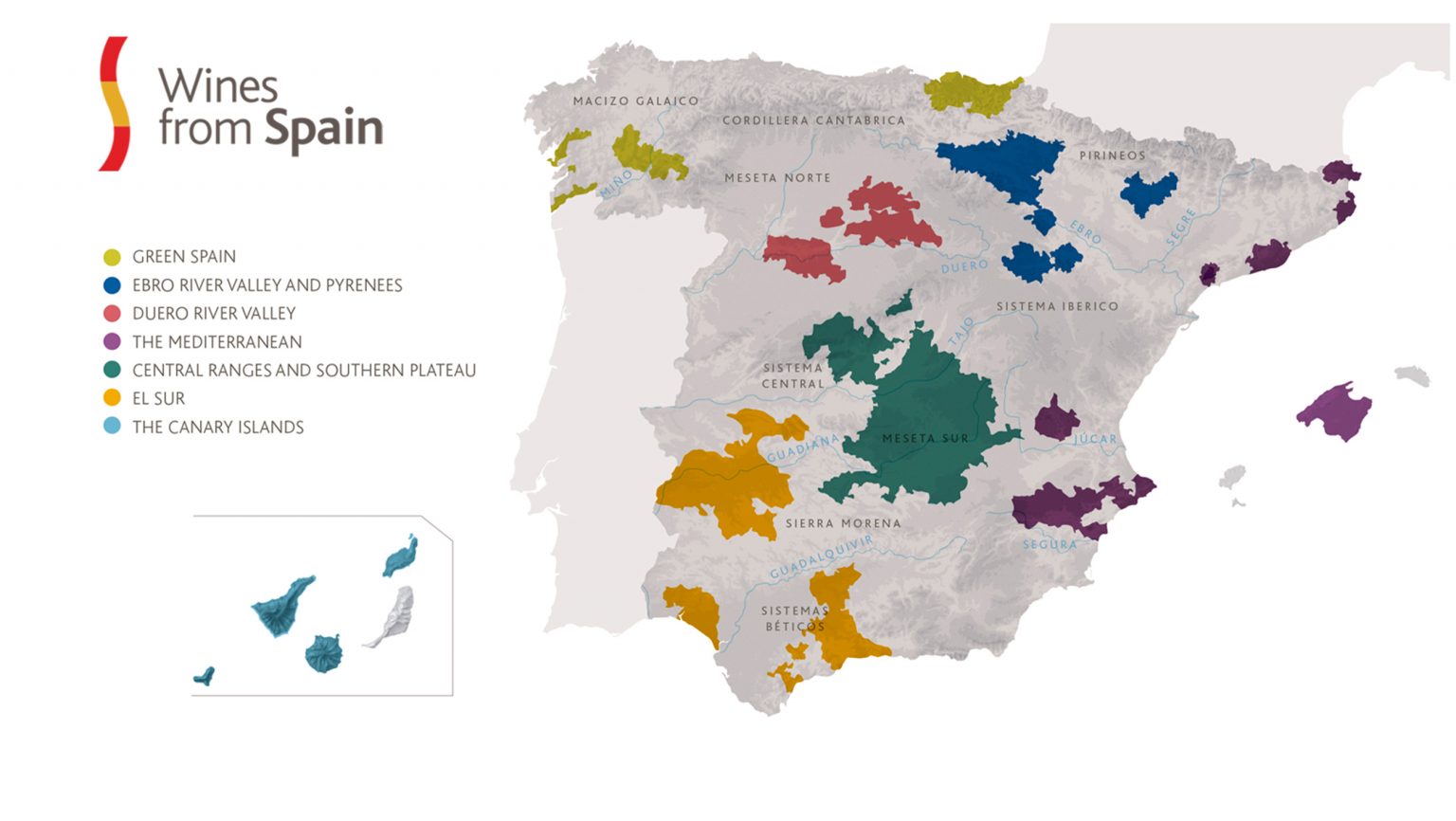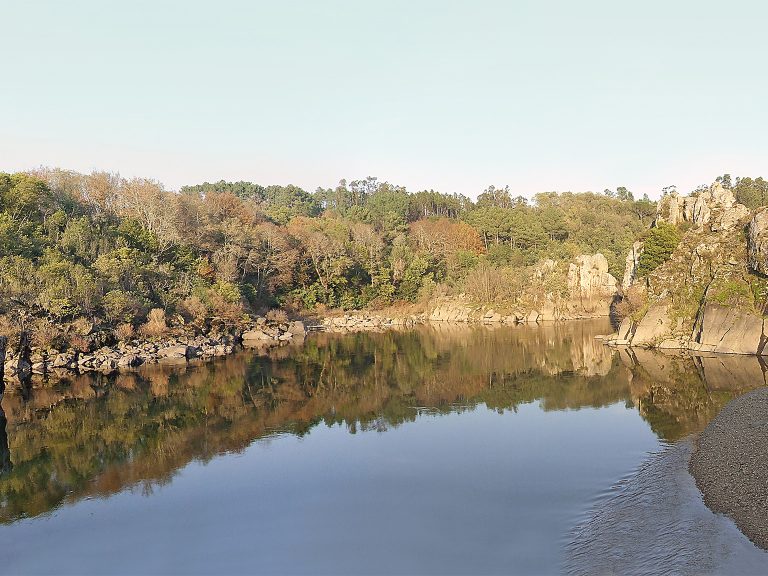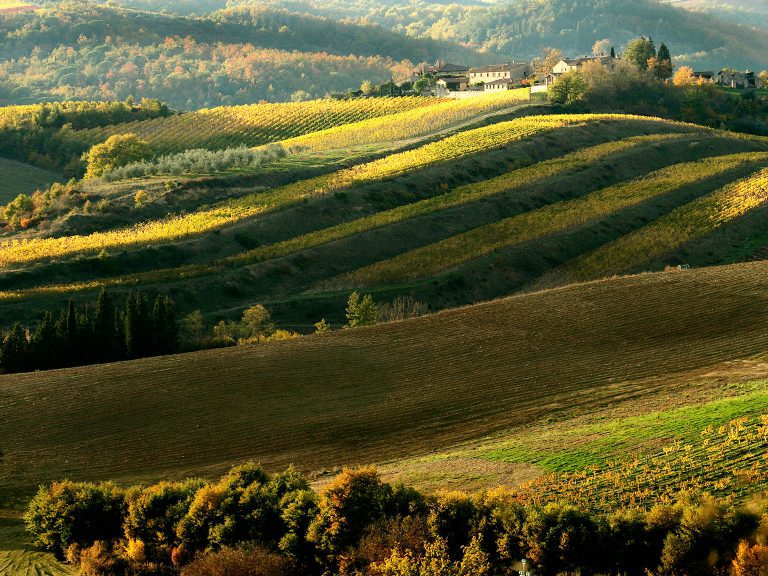This content was produced in collaboration with our partner, Wines from Spain.
Spain sits among the world’s most important wine countries, with over one million hectares under vine across 139 wine-producing regions. But while Spanish wine is no longer unfamiliar to the U.S. wine trade and consumers alike, the sheer range of quality wines produced across this Iberian country is often underestimated.
To classify the wines of Spain under a single style or character would be impossible. This is a country of exceptional diversity, with vines planted across a huge range of climates and geographies. Vineyards stretch from the lush and rainy coasts of Green Spain to the extreme and arid plains of the Meseta, from the valleys carved by the Ebro River to the volcanic Canary Islands off the west coast of Africa.
The sheer number of grape varieties also widens the spectrum of Spanish wines. More than 200 grape varieties are grown here, from international favorites to the country’s many local specialties, like Tempranillo, Mencía, Albariño, and Verdejo. While local winemakers carry on the traditions passed down through Spain’s winemaking history, they also look to push their industry forward, experimenting with styles and increasingly focusing on organic viticulture.

Don’t miss the latest drinks industry news and insights. Sign up for our award-winning newsletters and get insider intel, resources, and trends delivered to your inbox every week.
From well-known icons to energetic up-and-comers, the diverse terroirs of Spain offer something for every palate: still, sparkling, or fortified, white, red, or rosé. Discovering the many facets of Spanish wine has never been easier.
Geography
As the third-largest country in Europe, Spain’s geography and climate are exceptionally diverse, comprising many distinctive regions making equally distinctive wines. It dominates the Iberian peninsula in southwestern Europe, bordering the Mediterranean Sea, north Atlantic Ocean, Bay of Biscay, and Pyrenees Mountains. One of the country’s most distinguishing geographical features, is the Meseta, a wide plateau that covers much of central Spain.
It is also quite a mountainous country, second in Europe only to Switzerland, allowing producers to harness freshness from altitude even in hot areas. One of these mountain ranges, the Cantabrian cordillera, separates Spain’s cool north coast and protects the rest of the country from rainy winds. While Spain’s climate is largely maritime in the north, it becomes more Mediterranean as the land approaches the sea, with an extreme continental climate defining the inland plateau.
History
Though Spain has really only been catapulted into the international wine spotlight over the past 50 years, its wine heritage is one of the oldest in the world. Grapevines first came to Spain more than 3,000 years ago when the Phoenicians planted vineyards in the region now known as Jerez-Xérès-Sherry. Winemaking continued throughout Roman rule, largely centered along the coasts and even exported to modern-day France and England.
After a period of decline under the rule of the Moors, wine once again became an integral part of Spain’s culture in the late 1400s. Sherry was a coveted export, and later, the onset of phylloxera in France drove French winemakers to relocate their expertise—and their barricas—to northeastern regions like Rioja and Navarra. Unfortunately, phylloxera soon found its way to Spain’s vineyards, decimating the country’s wine industry. While vineyards were replanted, winemaking technology languished and Spain’s wines largely remained under the radar under the rule of a military dictatorship.
Upon the end of the Franco regime in the mid-1970s, the Spanish wine industry was imbued with new energy. Modern equipment and practices became more widespread, buoyed even further by the entrance of Spain into the EU in 1986. But even as new techniques and technologies have entered Spain’s wineries, producers have increasingly looked to the past, heralding indigenous varieties and preserving traditions. Today, Spain’s diverse winegrowing regions, grape varieties, and producer styles combine to create one of the most exciting arrays of quality wines in the world.
Key Regions and Grapes
Seven geographical regions have been established by Wines from Spain: Green Spain; Ebro River Valley and Pyrenees; Duero River Valley; Southern Spain; the Canary Islands; the Mediterranean Coast; and the Central Ranges and Southern Plateau.
Green Spain
Green Spain, as its name might suggest, is exceptionally lush and verdant. This cool, rainy part of the country stretches from Galicia in the northwest, just above Portugal, along the northern coast to Basque Country. The region’s mild maritime climate predisposes it to white grapes, but red grapes also succeed inland, where temperatures begin to warm.
Albariño is the primary white grape of Galicia, where it has made a name in Rías Baixas DO for its fresh, minerally, aromatic wines. Other white grapes include Godello and Treixadura, which may be blended into Rías Baixas wines or bottled as varietal wines in DOs like Ribeiro, Monterrei, and Valdeorras. The dramatic slopes of Ribeira Sacra DO showcase Galicia’s most promising red grape: Mencía, which makes fresh reds with berry flavors, floral tones, and plenty of acidity. Nearby Bierzo DO also makes serious Mencía wines.
Basque Country, on the other hand, is the land of Txakoli, a light, spritzy, mouthwatering specialty usually made from the local white grape Hondarrabi Zuri (or, more rarely, Hondarrabi Beltza for rosé and red wines). Though it is just across the mountains from Rioja, the climate and wines here are strikingly different. These lemony, tangy Txakolis are perfectly matched with the region’s abundance of local seafood.
Ebro River Valley and Pyrenees
Defined by the Ebro River and its tributaries, which have carved out some of Spain’s best-known wine regions in north-central Spain, the Ebro River Valley is red wine country. Protected from the cool, rainy winds that define the climate of nearby Basque Country, its most famous region is Rioja DOCa.
While Rioja is known for making world-renowned reds based on the country’s most planted variety, Tempranillo (and sometimes blended with grapes like Garnacha, Mazuelo, and Graciano), the region is home to a wide range of wine styles, including rosés and Viura-based whites. Barrel aging is often employed, meaning that Riojas can be fresh and easy-drinking jovens or crianzas or more complex and serious reservas or gran reservas.
Just to the east of Rioja is Navarra DO, whose excellent wines have been overshadowed in the past by its famous neighbor. Garnacha dominates these vineyards, as it has for decades, and has more recently been combined with international grapes like Cabernet Sauvignon and Merlot to create fruit-forward, approachable reds. To the south and east, the Garnacha-driven DOs of Aragon—Campo de Borja, Calatayud, Cariñena, and Somontano—have recently garnered attention for their juicy reds and abundance of old vines.
Duero River Valley
Known politically as Castilla y Léon, it’s apt that this region takes its name from the Duero River, upon which most of the area’s most famous DOs are centered. The river begins high in the Iberian System mountain range and travels across the Portuguese border to empty in the Atlantic. The Duero River Valley largely has an extreme continental climate, with hot summers and cold winters, but high daytime temperatures are tempered by altitude and cool nights to preserve acidity in wines.
The Ribera del Duero DO, which has evolved tremendously over the past four decades, is centered along both banks of the river and the region is favored for its bold, complex, and structured reds made from the Tempranillo grape, known here as Tinto Fino. Rosés may also be produced.
The DO’s white wine complement can be found just to the west in Rueda DO, which specializes in fresh and fruity Verdejo wines (along with, more recently, Sauvignon Blanc). Across the river, Toro DO makes intense, full-bodied reds from Tempranillo (known locally as Tinta de Toro), accompanied to a lesser extent by white and rosé wines. Cigales DO is particularly known for its Tempranillo-based rosé wines.
Southern Spain
The site of Spain’s oldest vine plantings, Andalucía is the southernmost and hottest part of the country. Fortified wines are the specialty of this arid land, produced in DOs like Montilla-Moriles, Málaga, and of course, Jerez-Xérès-Sherry. Located along the southern coast, Jerez-Xérès-Sherry gets more rainfall than other parts of Andalucía, which is trapped in the DO’s limestone-rich albariza soils for grapevines to access.
The neutral Palomino grape variety creates the majority of sherry’s production, vinified dry and aged in the region’s signature solera system to create a wide range of styles: fresh and almond-like finos; amontillados aged under the protective veil of yeast known as flor; rich and nutty olorosos; and unctuous Pedro Ximénez-based wines. “PX” (as it is fondly known) accumulates plenty of sugar in the hot Andalucían sunshine, making it well-equipped to create lusciously sweet, raisin-like dessert sherries, while the less common Moscatel grape ripens late and creates aromatic and sugary fortified wines.
In addition to these complex and renowned wines, winemakers have increasingly experimented with new styles in Andalucía, pushing the boundaries of their DOs and creating dry table wines as well.
Extremadura lies just west of Castilla-La Mancha and to the northwest of Andalucía. It was not until the end of the 21st century (officially in 1999) that the first and only DO in Extremadura was created. DO Ribera del Guadiana takes its name from the river that runs east to west through the region’s vineyards. The 30-plus grape varieties authorized by the DO include both international varieties as well as many local grapes, some of which had nearly disappeared.
The Canary Islands
Apart from Spain’s mainland are two sets of islands that have garnered new attention in recent years: the Canary Islands, off the coast of Africa in the Atlantic Ocean, and the Balearic Islands in the Mediterranean.
While the Canary Islands are located many miles from Spain itself, they played an important role in Spanish history as a port for explorers to stock up on local wine before long voyages. While each island has its own topography, overall, the Canaries have a hot and humid climate tempered by elevation from mountainous terrain and intense sea winds. Rich volcanic soils lend distinct minerality and complexity to the wines as well.
Much of the Canaries’ winemaking is centered on the islands of Tenerife, Lanzarote, and Gran Canaria, where producers make whites from grapes like Malvasia and Listan Blanco as well as reds and rosés from grapes like Listan Negro and Negramoll.
The Mediterranean Coast
This large area of Spain covers both Cataluña in the northeast and the Levante in the southeast, which, while distinct, are both influenced by warm Mediterranean breezes. Cataluña is home to many intriguing and distinct regions and counts quite a few local and international grape varieties among its vines.
Priorat DOCa is the region’s best-known area—a mountainous, rocky area where black soil called llicorella creates powerful, structured reds based on traditional grapes like Garnacha and Cariñena, and sometimes blended with international varieties. The surrounding Montsant DO makes Priorat-like wines from a less extreme climate in more limestone-laden soils. Other red wine-focused regions include DOs like Conca de Barbera, Costers del Segre, Empordá, Pla de Bages, and Terra Alta, each of which includes many different varieties within its vineyards. Garnacha, however, plays an important role in these warmer regions.
Of course, Cataluña would not be complete without Penedés, which is a DO in its own right but is more famously known for crafting much of Spain’s Cava. White grapes, particularly the classic Cava trio of Parellada, Macabeo, and Xarel-lo, dominate these vineyards and are typically used to make the country’s signature, traditional-method sparkler.
The Levante, on the other hand, covers the areas around Valencia and Murcia. Temperatures here are higher, leading regions like Alicante DO, Valencia DO, Yecla DO, and more to focus on red wines, but nighttime temperature drops due to elevation help winemakers to create well-balanced wines. Jumilla DO has proven to be a standout for its rich and full-bodied reds from Monastrell and Garnacha, while Utiel-Requena DO has become known for its dense and deeply-colored Bobal wines.
In the Balearic Islands, the wine culture is still evolving, particularly on the islands of Mallorca and Menorca, where winemakers work with both local and international grape varieties. Few of their wines ever leave the country, but they are often fresh and easy-drinking.
Central Ranges and Southern Plateau
This hot, dry region, sometimes referred to as the Meseta, was long considered suitable only for bulk production. It is still home to nearly two-thirds of Spain’s vineyards, and ambitious producers are increasingly focusing on quality wines, leveraging the cool nighttime temperatures that come with high-altitude vineyards.
The neutral Airén grape is still the most-planted variety, but the Castilla-La Mancha area is increasingly focusing on value-driven varietal wines that resonate well in export markets. Many of Spain’s best Vinos de Pago estates are found here, and more individual producers are pushing the boundaries of the typical styles of this region.
Since the mid-2000s, Garnacha de Gredos has become the international calling card of winemakers located within the foothills of the Gredos mountains, a little over 100 miles west of Madrid. Although the wines are produced under separate DOs depending on provincial borders, what unites them is a focus on old Garnacha bush vines grown at high elevation on poor granite and slate soils. As a testament to Garnacha becoming one of Spain’s star red grapes, this area’s wines continue to attract attention both at home and abroad, and an increasing number of producers, regardless of their DO, now display Sierra de Gredos on their labels.
What’s Happening in Spain Today?
As the country with the largest vineyard area in the world, Spain understands the significant environmental impact of viticulture and the importance of preserving its land for the future. This is why Spanish winemakers have placed significant investment in organic wine production. With 113,480 hectares of certified organic vineyards—12 percent of the country’s total vineyard acreage—Spain is the world leader in organic viticulture.
The Spanish Organic Wines initiative was created in 2014 and currently counts 39 family wineries in regions across the country as its members. The majority of these wineries are small to medium estates that both own vineyards and make their own wine, which is why sustainable growth of organic wine production is a core tenet of the association. As a whole, the group is committed to adding value to local areas, revitalizing vineyards and preserving biodiversity, and mitigating climate change by reducing its carbon and water footprint—all while crafting high-quality wines to sell in export markets, of course.
While the amount of certified organic vineyards have grown significantly already, Spain’s winemakers aren’t stopping there. Their goal is to have 160,000 hectares of certified organic vineyards by 2023, promising a sustainable future for Spain’s wines.










